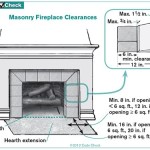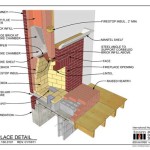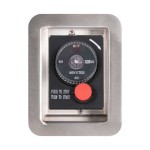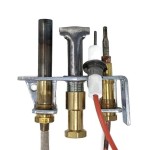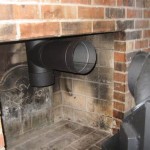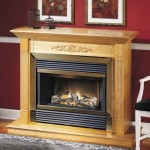Cost To Build a Fireplace Mantel: A Comprehensive Guide
A fireplace mantel serves as both a functional shelf and a decorative focal point within a room. It provides a surface for displaying artwork, photographs, and other decorative items, while also contributing to the overall aesthetic appeal of the fireplace and the surrounding space. The cost to build a fireplace mantel can vary significantly, depending on a range of factors including the materials used, the complexity of the design, and whether the project is undertaken as a DIY endeavor or contracted to a professional.
Understanding the cost implications associated with building a fireplace mantel is crucial for homeowners seeking to enhance their living spaces. This article provides a comprehensive overview of the key factors influencing the cost, offering valuable insights to assist in budgeting and planning for this home improvement project.
Material Selection and its Impact on Cost
The choice of materials is arguably the most significant factor affecting the cost of a fireplace mantel. Different materials offer varying degrees of durability, aesthetic appeal, and ease of installation, all of which contribute to the overall expense.
Wood: Wood is a popular choice for fireplace mantels due to its versatility, warmth, and relative affordability. Softwoods like pine and fir are generally less expensive than hardwoods like oak, maple, and cherry. However, hardwoods offer greater durability and resistance to wear and tear. The price of wood can also vary depending on its grade, source, and availability. Reclaimed wood, for example, is often more expensive than commercially sourced lumber due to its unique character and historical value. The labor involved in preparing the wood, including cutting, sanding, and finishing, also contributes to the overall cost.
Stone: Stone mantels offer a more dramatic and luxurious aesthetic. Options include natural stone such as granite, marble, and limestone, as well as manufactured stone veneers. Natural stone mantels are typically more expensive due to the cost of quarrying, cutting, and transporting the stone. Manufactured stone veneers offer a more cost-effective alternative, providing the look and feel of natural stone at a lower price point. However, even with manufactured stone, the installation process can be more labor-intensive, requiring specialized tools and expertise.
Brick: Brick mantels offer a rustic and traditional look. The cost of brick can vary depending on the type of brick selected, with options ranging from standard clay bricks to more decorative and specialized bricks. The installation process involves mortaring the bricks together, which requires skill and precision to ensure a structurally sound and aesthetically pleasing result.
Metal: Metal mantels are less common than wood or stone, but they can offer a sleek and modern aesthetic. Options include steel, wrought iron, and aluminum. The cost of metal mantels can vary depending on the type of metal, the complexity of the design, and the fabrication process. Custom metal mantels are typically more expensive than pre-fabricated options.
Other Materials: Other materials that can be used for fireplace mantels include concrete, tile, and even glass. The cost of these materials can vary widely depending on the specific type and design.
Design Complexity and Labor Costs
The complexity of the mantel design significantly influences the labor costs associated with the project. A simple, straightforward design will generally require less time and skill to build compared to a more elaborate and intricate design.
Simple Designs: Simple mantels often consist of a single shelf or a basic frame surrounding the fireplace. These designs are relatively easy to construct and can often be tackled as a DIY project, reducing the overall cost. However, even with a simple design, proper measurements, accurate cuts, and careful installation are essential to achieve a professional-looking result.
Complex Designs: Complex mantels may feature intricate carvings, moldings, or other decorative elements. These designs require a higher level of skill and expertise, often necessitating the services of a professional carpenter or contractor. The additional labor involved in creating these intricate details will significantly increase the overall cost.
Custom Designs: Custom-designed mantels offer the most flexibility in terms of aesthetics and functionality. However, they also tend to be the most expensive option. Custom designs require detailed planning, precise measurements, and skilled craftsmanship to ensure the final product meets the homeowner's specifications. The cost of a custom mantel can vary widely depending on the complexity of the design and the materials used.
DIY vs. Professional Installation: Deciding whether to undertake the project as a DIY endeavor or to hire a professional is a crucial cost consideration. DIY projects can save on labor costs, but they also require a certain level of skill, experience, and access to the necessary tools. If the project is beyond the homeowner's capabilities, hiring a professional is recommended to ensure a safe and aesthetically pleasing result. Professional installation costs can vary depending on the complexity of the project, the location, and the experience of the contractor.
Hidden Costs: Homeowners should also be aware of potential hidden costs associated with building a fireplace mantel. These costs may include demolition of an existing mantel, structural modifications to the fireplace surround, electrical or plumbing work, and finishing costs such as painting, staining, or sealing.
Geographic Location and Availability of Resources
The geographic location of the project can also influence the cost of building a fireplace mantel. Material costs, labor rates, and local building codes can vary significantly from one region to another.
Material Costs: The availability of specific materials can impact their cost. For example, certain types of stone may be more readily available in some regions than others, leading to lower prices. Similarly, the cost of lumber can vary depending on local forestry practices and transportation costs.
Labor Rates: Labor rates for carpenters and contractors can also vary depending on the geographic location. Areas with a higher cost of living typically have higher labor rates. The demand for skilled tradespeople can also influence labor costs; areas with a shortage of qualified professionals may command higher prices.
Building Codes and Permits: Local building codes and permit requirements can add to the overall cost of the project. Some jurisdictions may require permits for fireplace mantel installations, particularly if the mantel is attached to the fireplace surround or involves structural modifications. The cost of these permits can vary depending on the location and the scope of the project. Adhering to local building codes is essential to ensure the safety and structural integrity of the fireplace mantel.
Accessibility: The accessibility of the project site can also affect the cost. If the fireplace is located in a difficult-to-reach area, such as a second-story room without easy access, the labor costs may be higher due to the additional time and effort required to transport materials and equipment.
Seasonal Variations: Seasonal variations can also impact the cost of building a fireplace mantel. Demand for home improvement services may be higher during certain times of the year, such as the spring and summer months, leading to higher prices. Planning the project during off-peak seasons may result in lower costs.
In addition to the above factors, homeowners should also consider the long-term maintenance costs associated with different materials. Wood mantels, for example, may require periodic refinishing or sealing to protect them from moisture and wear. Stone mantels may require occasional cleaning to remove dirt and grime. Choosing materials that are durable and easy to maintain can help to minimize long-term costs.
Ultimately, the cost to build a fireplace mantel is a complex equation involving a multitude of variables. Careful planning, thorough research, and a clear understanding of the project's scope are essential for developing an accurate budget and achieving a satisfactory outcome.
Furthermore, homeowners should obtain multiple quotes from different contractors before making a final decision. Comparing quotes can help to identify the best value for the project and ensure that the contractor is qualified and experienced. Checking references and reviewing past work can also provide valuable insights into the contractor's capabilities and reputation.
Finally, it's crucial to have a written contract with the chosen contractor that clearly outlines the scope of work, the materials to be used, the payment schedule, and the project timeline. A well-defined contract can help to prevent misunderstandings and disputes, ensuring a smooth and successful project.

ᑕ❶ᑐ How Much Do Fireplace Built Ins Cost Get The Guide

How To Build A Fireplace Mantel In Only 5 Steps

Diy Rustic Fireplace Mantel The Cure For A Boring

Diy Fireplace Mantel Surround Faux Cast Stone European Style Tidbits

Diy Rustic Fireplace Mantel Domestically Speaking

Diy Fireplace Mantel Field Court

Faux Fireplace Mantel Surround Rogue Engineer

How To Build A Diy Fireplace Mantel Fixthisbuildthat

Building An Easy Modern Fireplace Mantel Young House Love

Fireplace Installation Cost 2024 Gas Wood Burning Electric
Related Posts

